Submitted by WA Contents
OPEN Architecture's cave-like UCCA Dune Art Museum released in new photographs
China Architecture News - Jul 04, 2019 - 02:10 21453 views

OPEN Architecture's cave-like UCCA Dune Art Museum, situated on a quiet beach along the coast of northern China’s Bohai Bay, has been released in new photographs. Completed in 2018, the UCCA Dune Art Museum was designed as a sanctuary for nature and art by reviving the feelings of pure, simple and touching onto the museum.
Covering a total of 930-square-metre floor area, the UCCA Dune Art Museum is carved into the sand, where it gently disappears. Its smooth transitions and flowing opening resemble a cave embedded in the landscape.
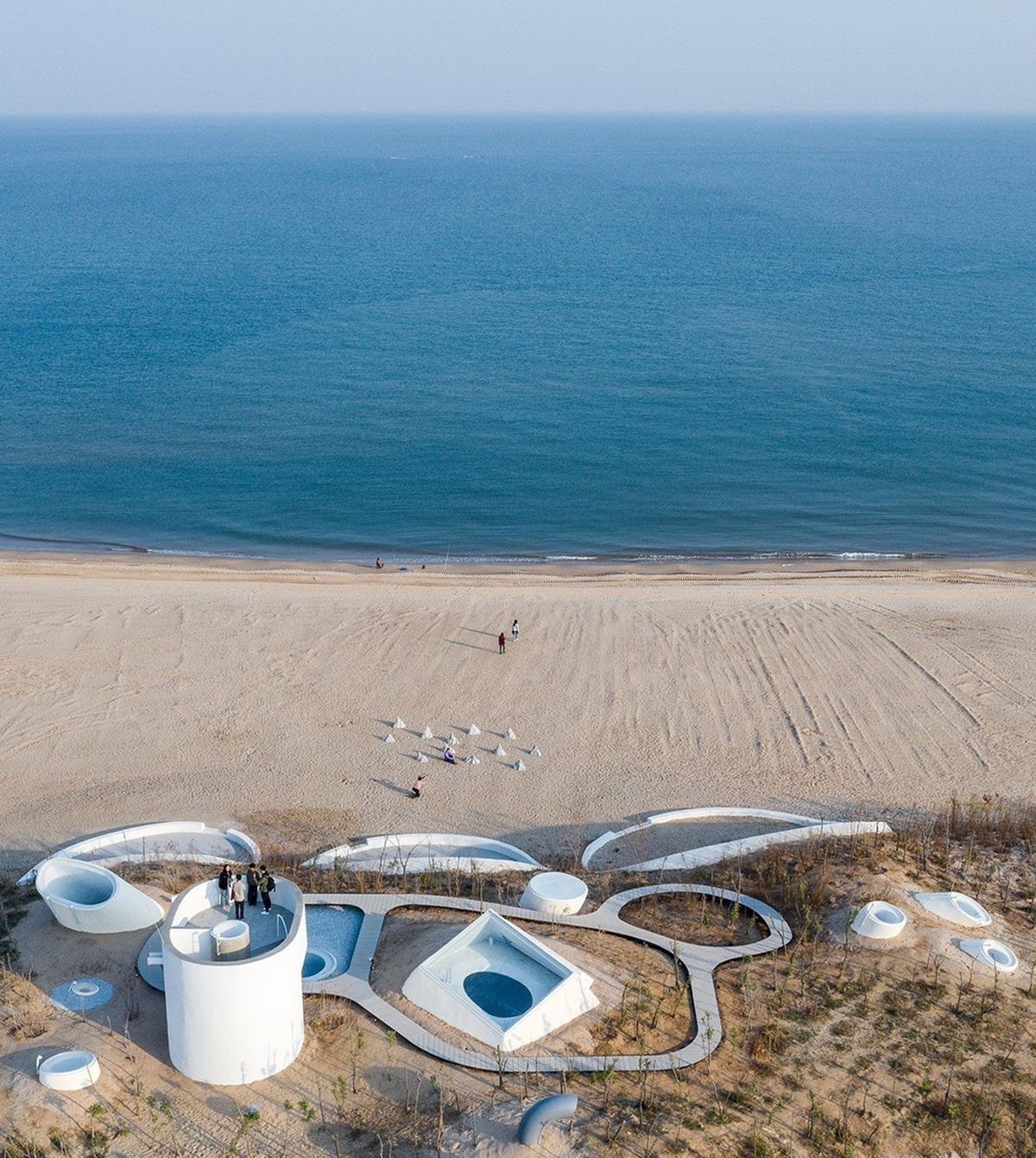
UCCA Dune Art Museum aerial view. Image © WU Qingshan
The museum comprises a set of different shapes of volumes that are scattered on the beach, just like a toy of a kid. Its resonate scale only creates three large openings overlooking the beach. Inspired by children’s tireless digging in the sand, the museum lies beneath this dune.
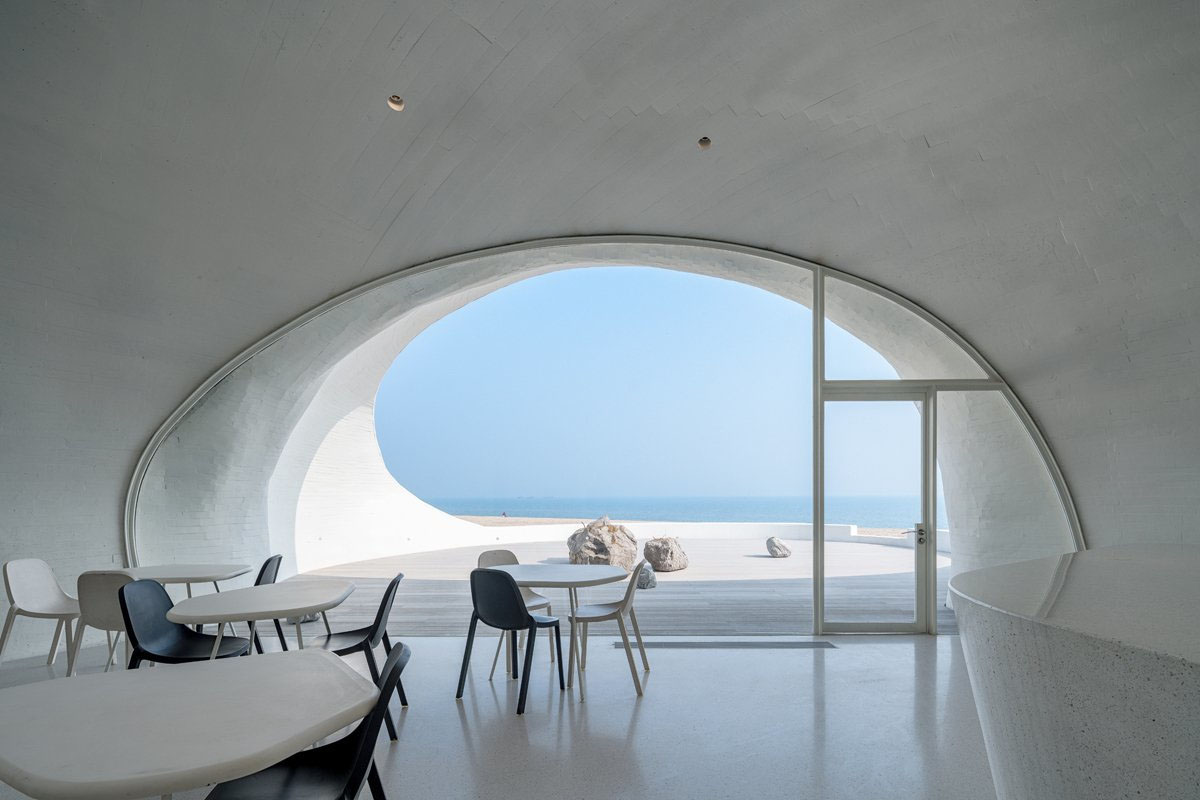
Cafe. Image © WU Qingshan
Its design seeks a return to primal and timeless forms of space, and explores fresh possibilities for the experience of viewing art. According o the studio, "digging" creates a series of interconnected, organically shaped spaces which, enveloped by sand, resemble caves—the primeval home of man, whose walls were once a canvas for some of humanity’s earliest works of art.
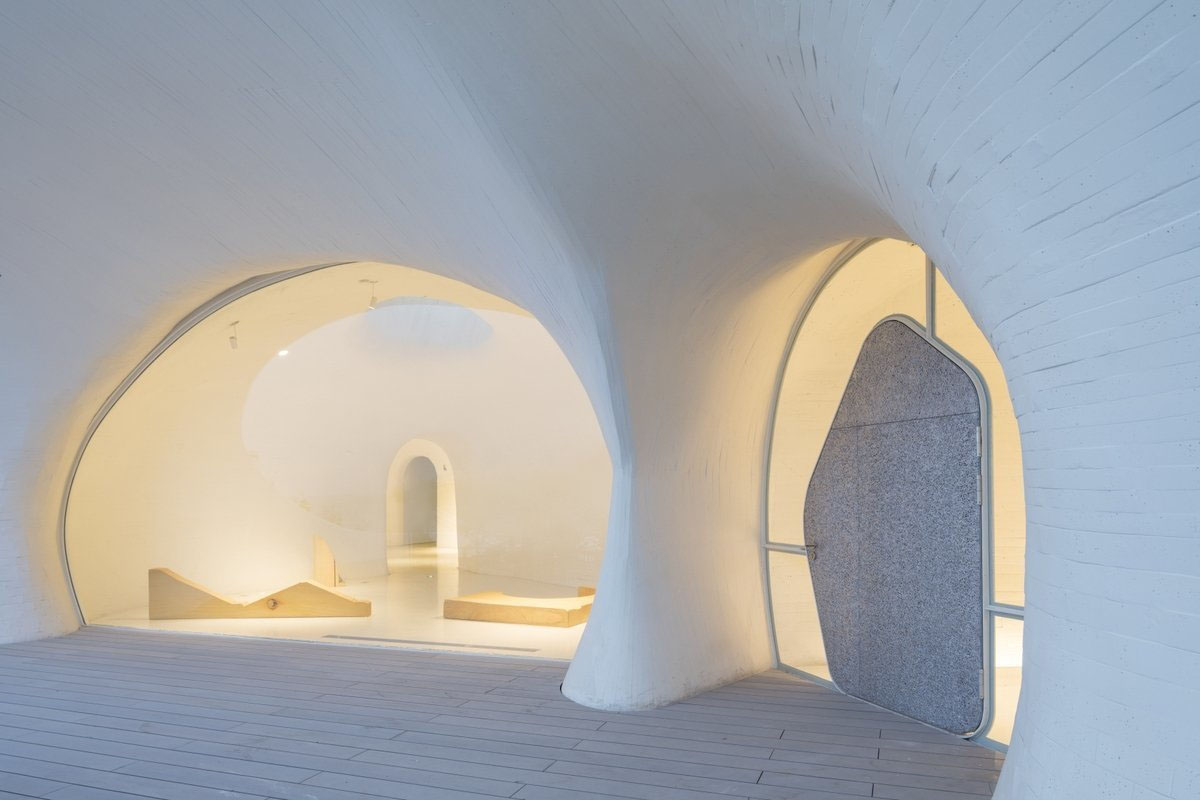
Night view. Image © TIAN Fangfang
Innovatively forming the space into a series of inter-connected, organic-shaped cells, and deliberately hiding the architecture under the sand dune in order to protect this fragile and critical natural component of the coast from the area’s encroaching real-estate developments, the Museum’s design is deeply committed to the site’s natural ecology and environment, and creates an engaging and non-traditional encounter with art and nature.
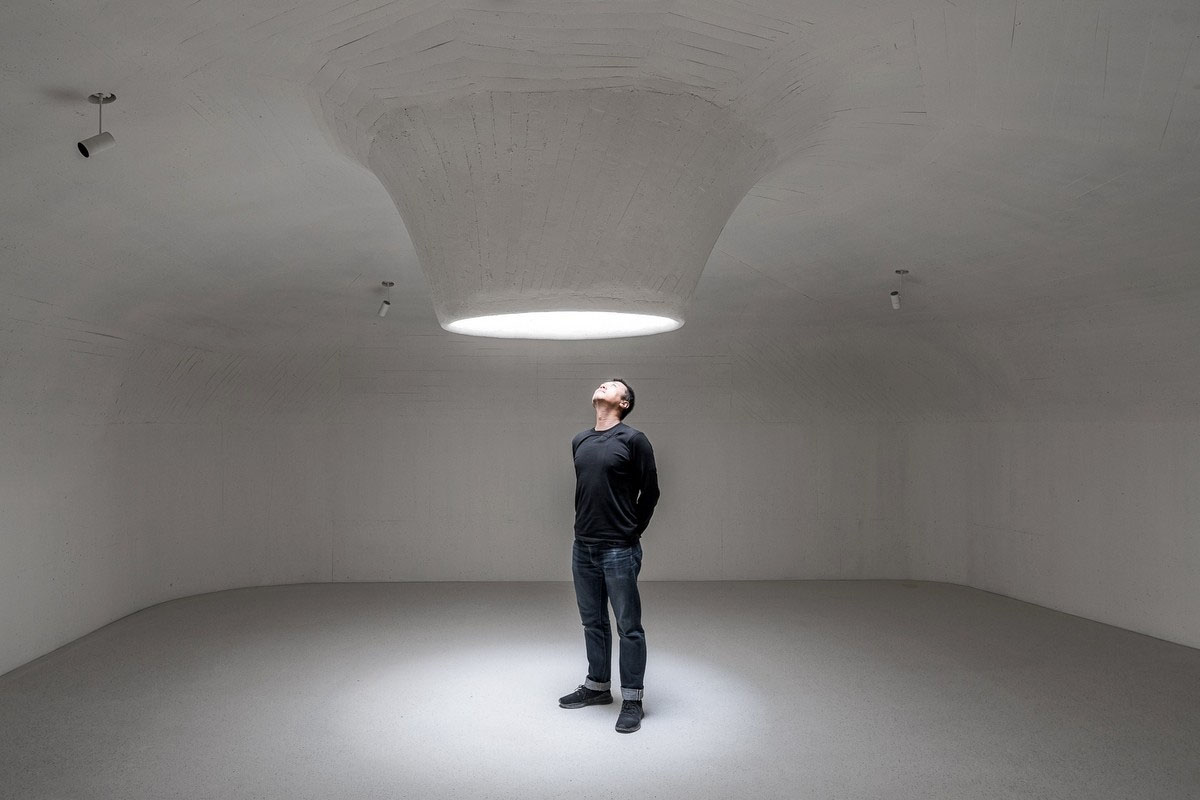
Gallery skylight. Image © WU Qingshan
Hidden between the sea and the sand, the design of the Dune Art Museum is simple, pure, and touching—a return to primal and timeless forms of space.
Different volumes were only designed for skylight on top of the landscape and an observation tower. In the interior, a series of cell-like contiguous spaces accommodate the Dune Art Museum’s rich and varied programs, which include differently-sized galleries and a café.
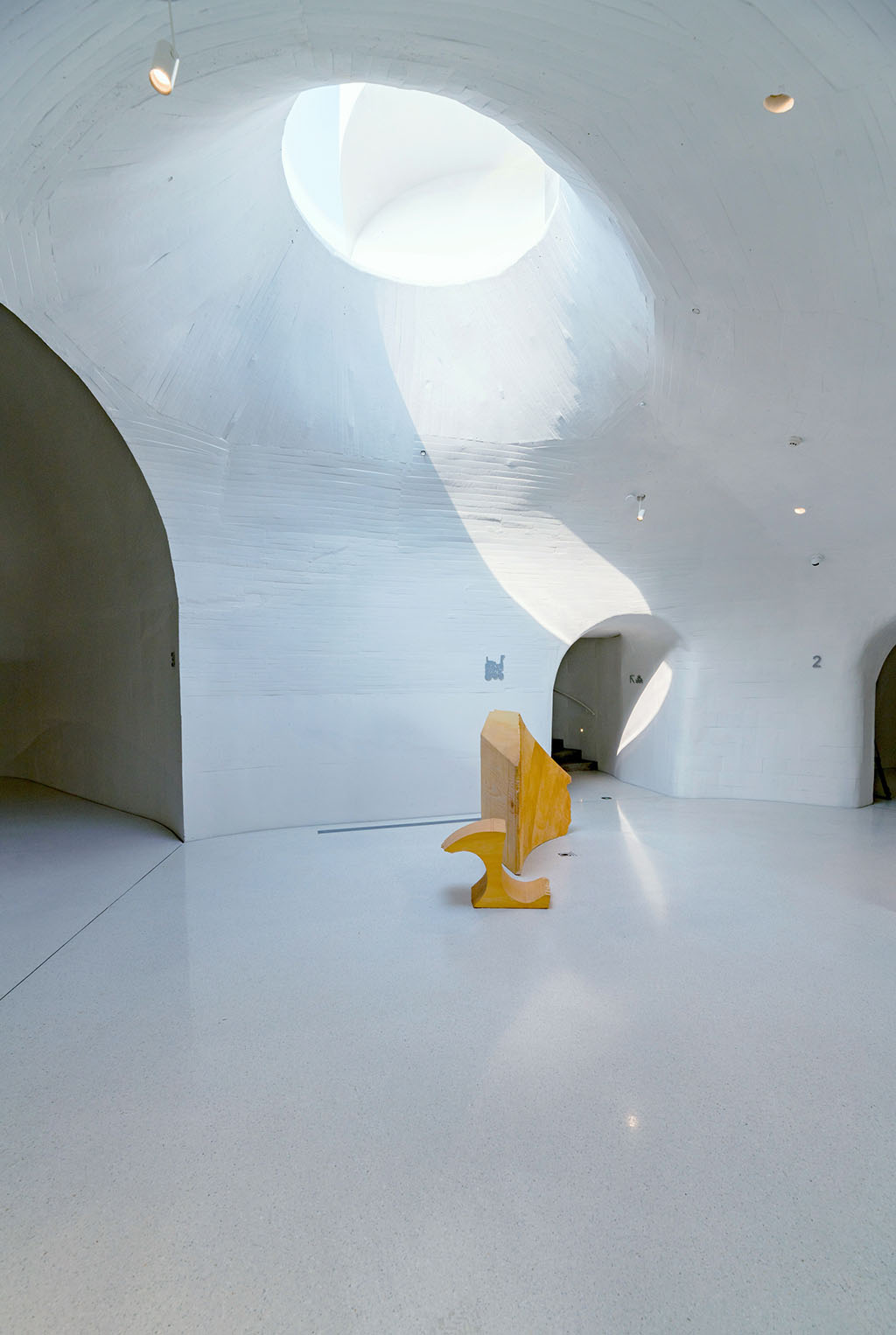
Gallery. Image © NI Nan
After passing through a long, dark tunnel and a small reception area, the space suddenly opens up as visitors enter the largest multifunctional gallery. There, a beam of daylight from the skylight above silently yet powerfully fills the space.
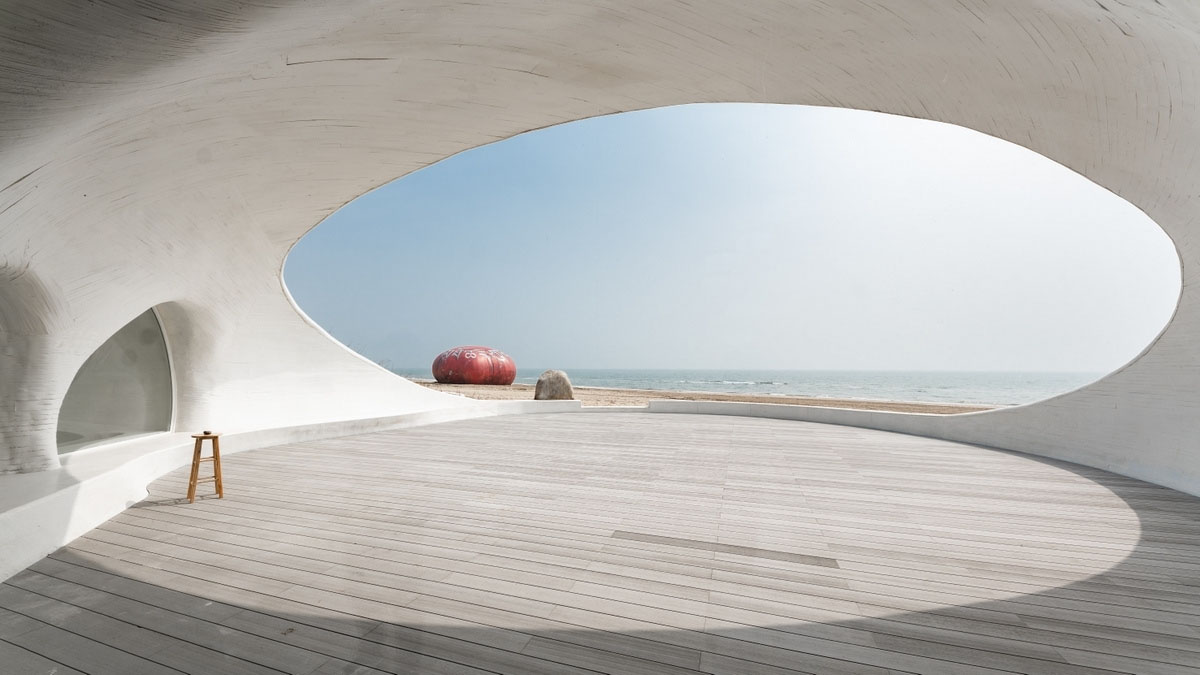
Outdoor exhibition terrace. Image © ZAIYE Studio
"The decision to create the art museum underneath the dunes surrounding it was born out of both the architects’ deep reverence for nature and their desire to protect the vulnerable dune ecosystem, formed by natural forces over thousands of years," said OPEN Architecture.
"Because of the museum, these sand dunes will be preserved instead of leveled to make space for ocean-view real estate developments, as has happened to many other dunes along the shore."
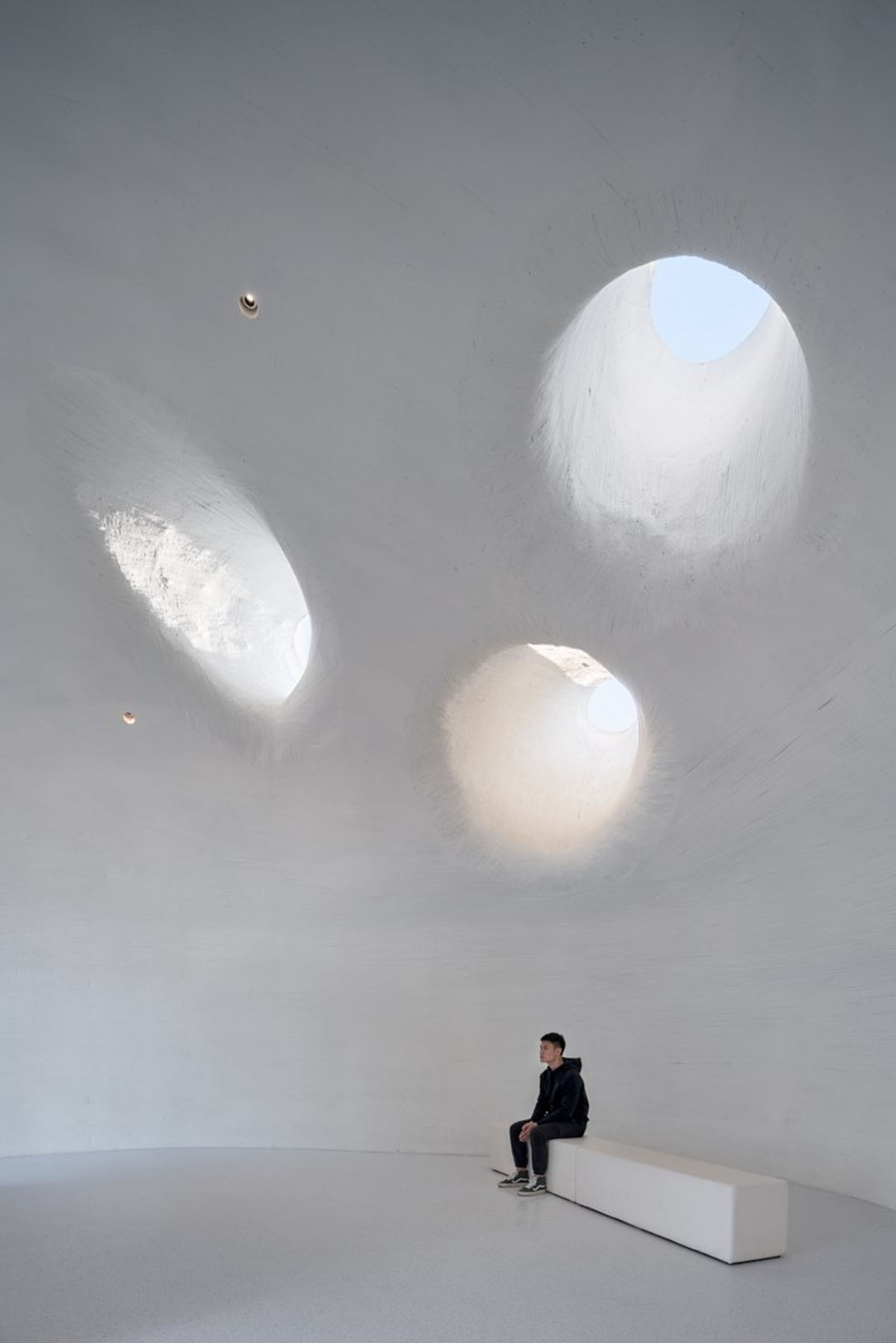
Gallery skylights. Image © WU Qingshan
Looking through different openings framed by the building, museum-goers can observe the ever-changing expressions of the sky and sea throughout the day.
A spiral staircase leads to a lookout on top of the sand dune, guiding curious audiences from the dark recesses of the museum’s cave-like galleries to the vast openness above. Hidden between the sea and the sand, the museum emerges as a hidden shelter, intimate to the body and soul—a place to thoughtfully contemplate both nature and art.
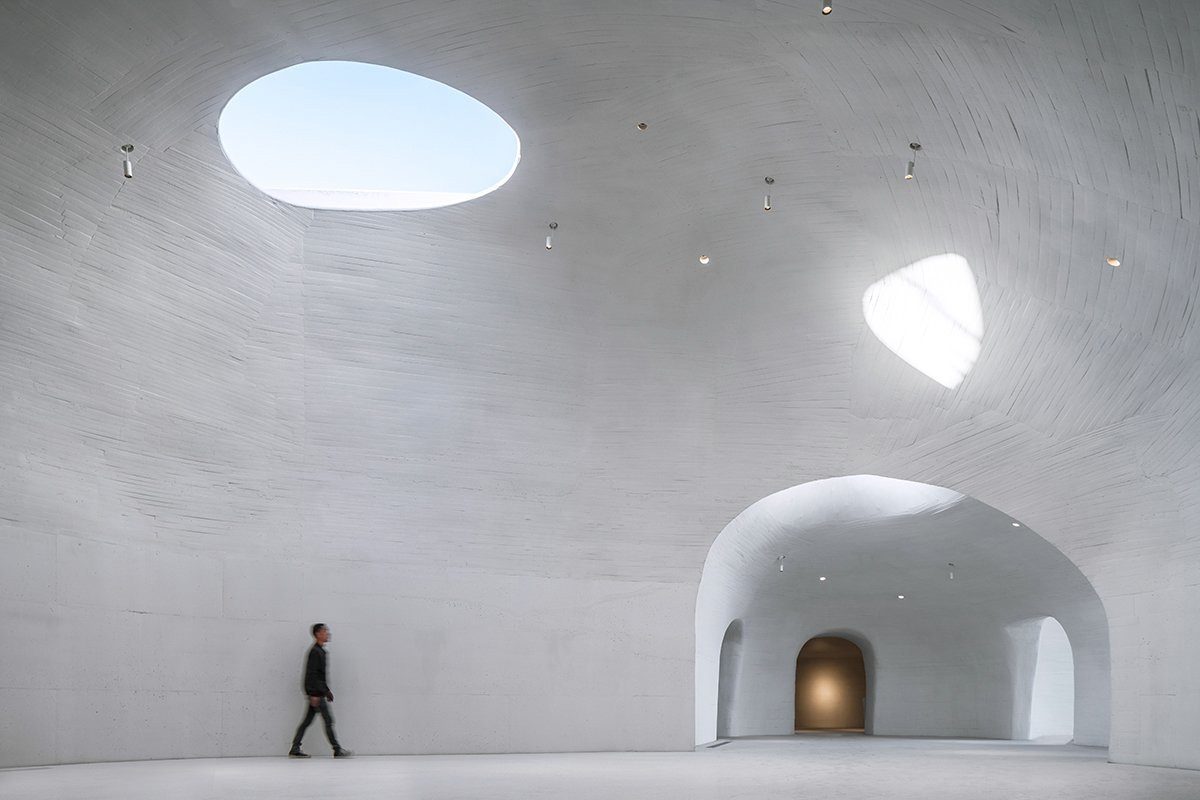
Main gallery. Image © WU Qingshan
The architects creates this type of complex three-dimensional geometry for the Dune Art Museum by using concrete shell which was shaped by hand by local workers in Qinhuangdao (some of whom were former shipbuilders), using formwork made from small linear strips of wood and other materials.

Gallery. Image © WU Qingshan
The architects deliberately retained the irregular and imperfect texture left by the formwork, allowing traces of the building’s manual construction to be felt and seen. In addition, the building’s doors and windows, reception desk, bar counter, and bathroom sinks are all custom-designed and made by hand.
The eight tables in the café are also designed by the architect, each with a distinct shape matching that of the floor plans of the eight main gallery spaces.
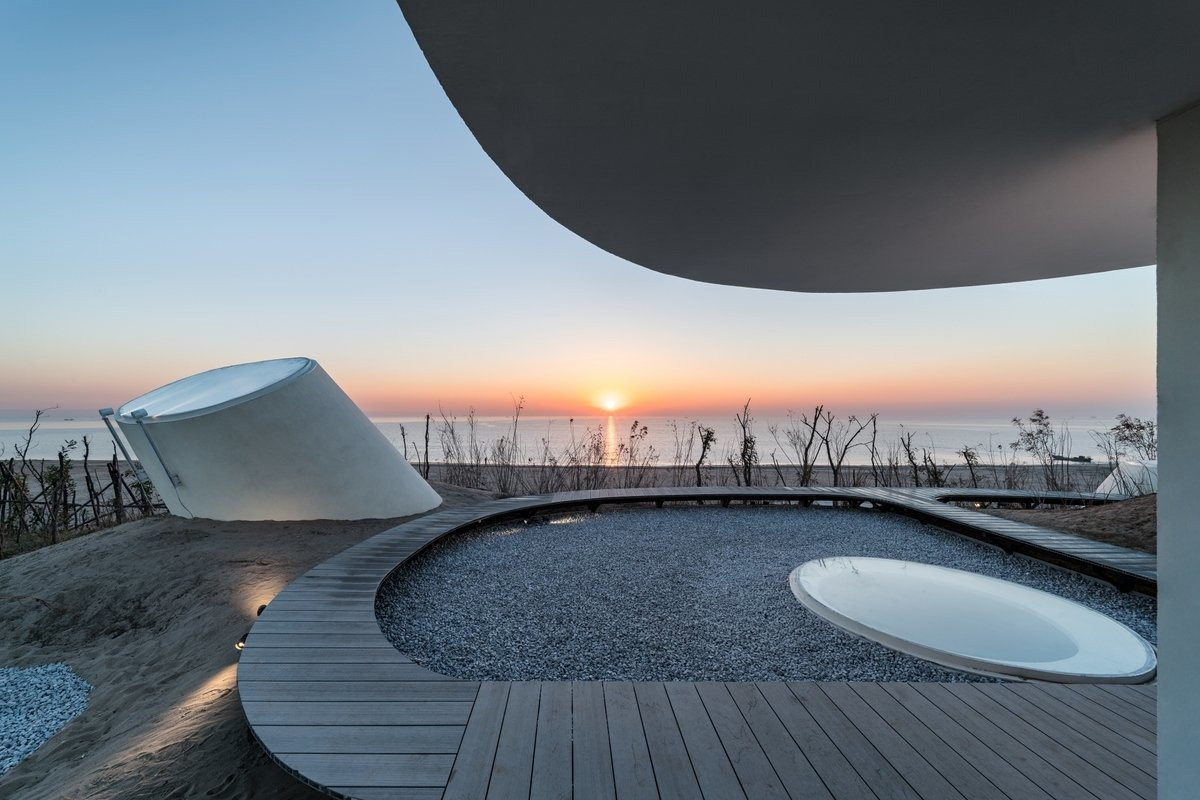
Rooftop. Image © WU Qingshan
The building’s many skylights were arranged with a different orientation and size to provide natural lighting for the museum’s spaces at all times of the year.
Its sand-covered roof greatly reduces the building’s summer heat load - and a low-energy, zero-emission ground source heat pump system replaces traditional air conditioning.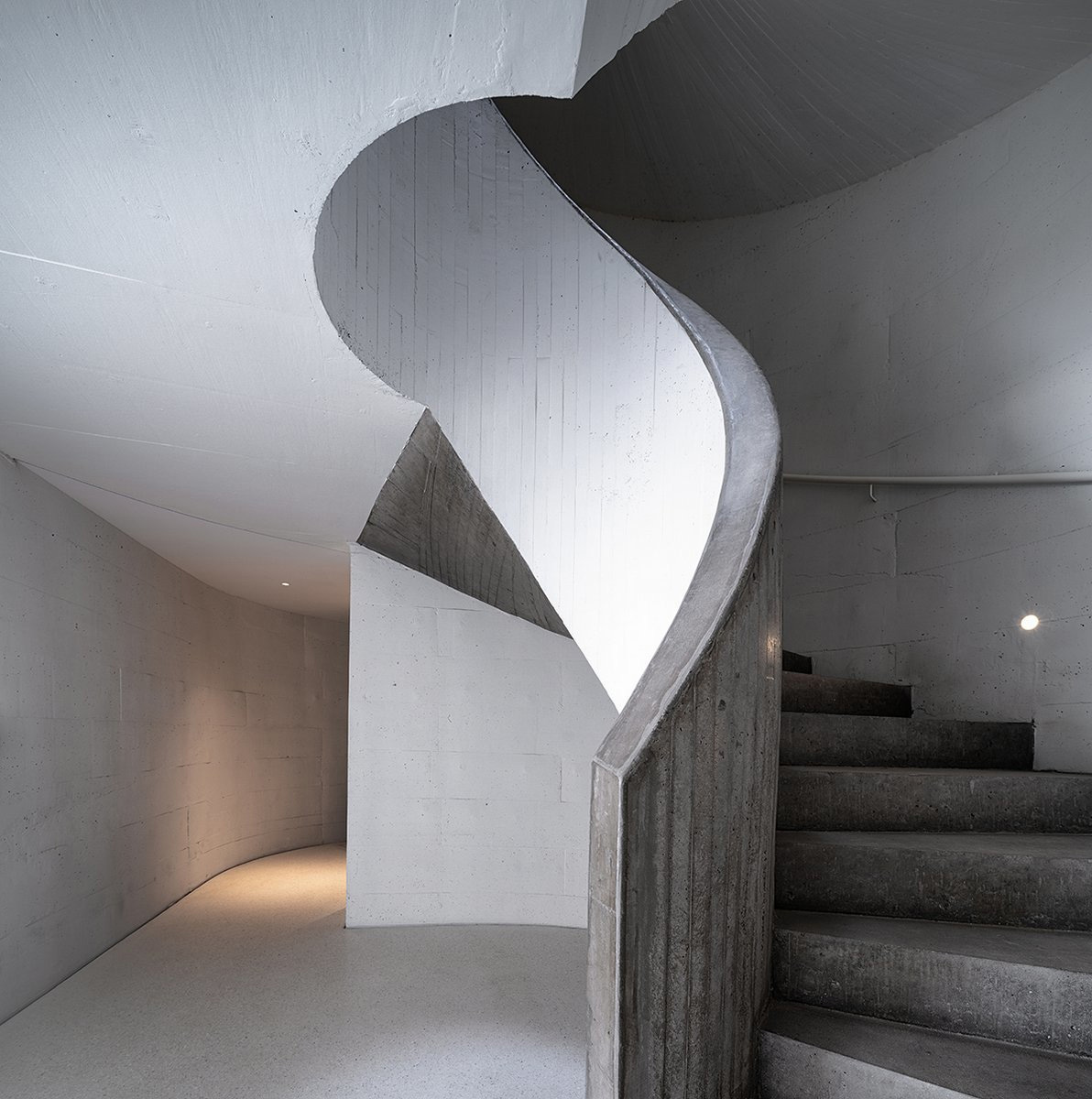
Spiral Staircase. Image © WU Qingshan
Project facts
Design Year: 2015 - 2018
Status: Completed
Client: Aranya
Operator: UCCA
Program: Reception, Café, Community Room, Exhibition Spaces, Outdoor Exhibition, Roof Terrace
Building Area: 930 m²
Location: Qinhuangdao, China
Architects: OPEN Architecture
Principals in Charge: LI Hu, HUANG Wenjing
Project Team: ZHOU Tingting (Project Architect), WANG Mengmeng, HU Boji, FANG Kuanyin, Joshua PARKER, LU Di, LIN Bihong, YE Qing, Steven SHI, JIA Han
Local Design Institute: CABR Technology Co., Ltd.
Lighting Design: X Studio, School of Architecture, Tsinghua University, China + OPEN Architecture
All images © WU Qingshan, TIAN Fangfang, NI Nan, Zaiye Studio
Top image © TIAN Fangfang
> via OPEN Architecture
